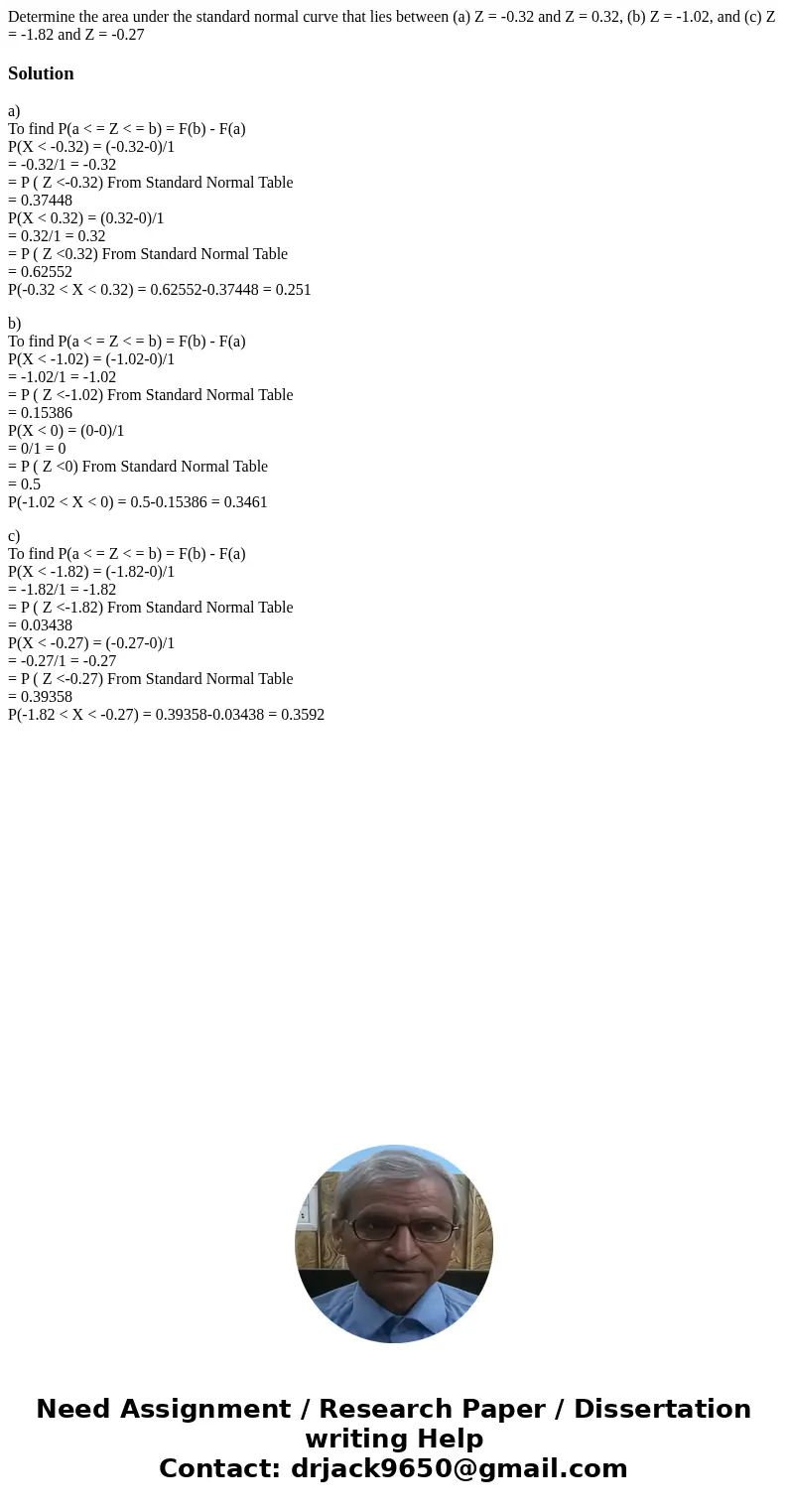Determine the area under the standard normal curve that lies
Solution
a)
To find P(a < = Z < = b) = F(b) - F(a)
P(X < -0.32) = (-0.32-0)/1
= -0.32/1 = -0.32
= P ( Z <-0.32) From Standard Normal Table
= 0.37448
P(X < 0.32) = (0.32-0)/1
= 0.32/1 = 0.32
= P ( Z <0.32) From Standard Normal Table
= 0.62552
P(-0.32 < X < 0.32) = 0.62552-0.37448 = 0.251
b)
To find P(a < = Z < = b) = F(b) - F(a)
P(X < -1.02) = (-1.02-0)/1
= -1.02/1 = -1.02
= P ( Z <-1.02) From Standard Normal Table
= 0.15386
P(X < 0) = (0-0)/1
= 0/1 = 0
= P ( Z <0) From Standard Normal Table
= 0.5
P(-1.02 < X < 0) = 0.5-0.15386 = 0.3461
c)
To find P(a < = Z < = b) = F(b) - F(a)
P(X < -1.82) = (-1.82-0)/1
= -1.82/1 = -1.82
= P ( Z <-1.82) From Standard Normal Table
= 0.03438
P(X < -0.27) = (-0.27-0)/1
= -0.27/1 = -0.27
= P ( Z <-0.27) From Standard Normal Table
= 0.39358
P(-1.82 < X < -0.27) = 0.39358-0.03438 = 0.3592

 Homework Sourse
Homework Sourse